Low-A.B.V. cocktails are super flavorful—and you won't be in trouble if you drink two or three.

At a craft spirits expo recently, there was a featured panel about current trends in bartending, and one of the trends the panelists highlighted was the growing popularity of lower alcohol cocktails and cocktails made with fortified wines like sherry.
Bartenders aren’t eschewing the classic boozier cocktails—the Negronis, Manhattans, and Sazeracs we’ve come to love for their silkiness and sophistication—but they are augmenting their menus with lighter, less boozy cocktails that concentrate on the flavors you can coax from vermouths and aperitifs.
And I think that makes us all winners. As much as we sometimes feel like James Bond and want our pre-dinner drink “large and very strong and very cold and very well-made,” there are also many times where would like to have three drinks instead of one, and not feel too terribly much worse for the wear.
This is precisely where low-A.B.V. cocktails shine.
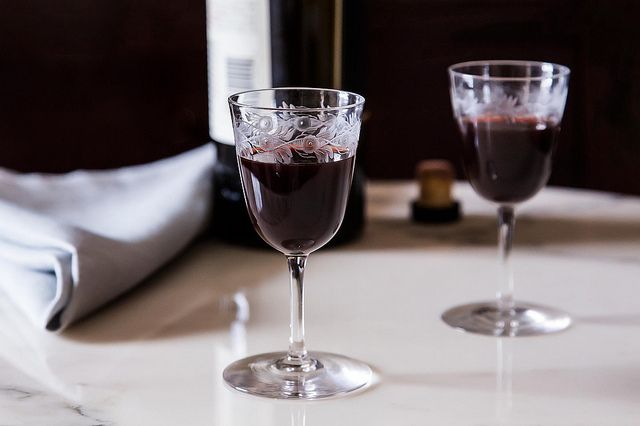
Low A.B.V. stands for low alcohol by volume, and it means precisely that: These drinks have less alcohol for unit volume than high-A.B.V. drinks. Spirits like gin, tequila, and whiskey are often around 40 to 50% A.B.V. while wine is usually around 8 to 12%.
Then, there is a spectrum of spirits that clock in in the 15 to 35% range. This includes vermouth and other herb-infused, bittersweet fortified wines like Quinquinas, Barolo Chinatos, and Pineau des Charentes. It also includes aperitifs like Aperol, Campari, and Cappelletti, as well as most amari (bittersweet liqueurs) and other liqueurs like orange, maraschino, peach, cacao, etc., as well as fortified wines like sherry and port.
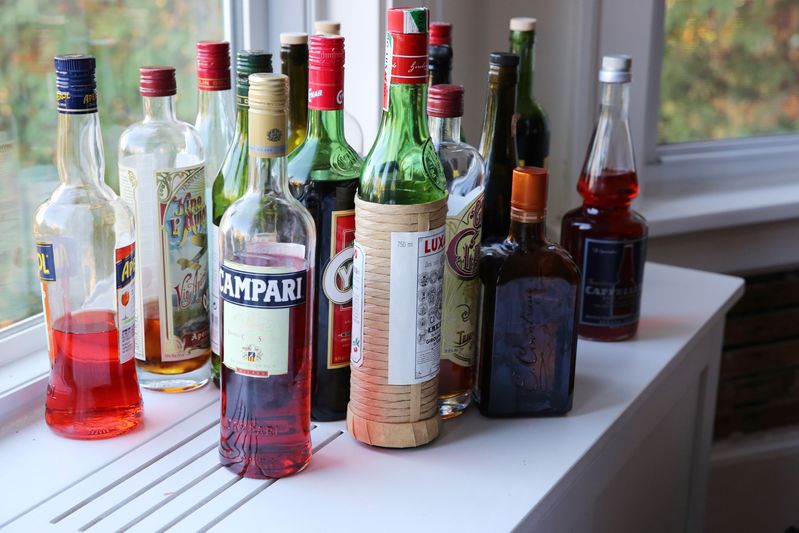
A small selection of my low-A.B.V. ingredients
Definitions of what constitutes a low versus high A.B.V. cocktail are all mooshy-gooshy and basically not defined at all. But, a drink that is made with predominantly the spirits that are on the lower end of the spectrum, like vermouth and aperitifs, get designated low A.B.V.
There isn’t a standardized term for low-A.B.V. cocktails either, and they may also be referred to as aperitif cocktails, session cocktails, or shims (among other names).
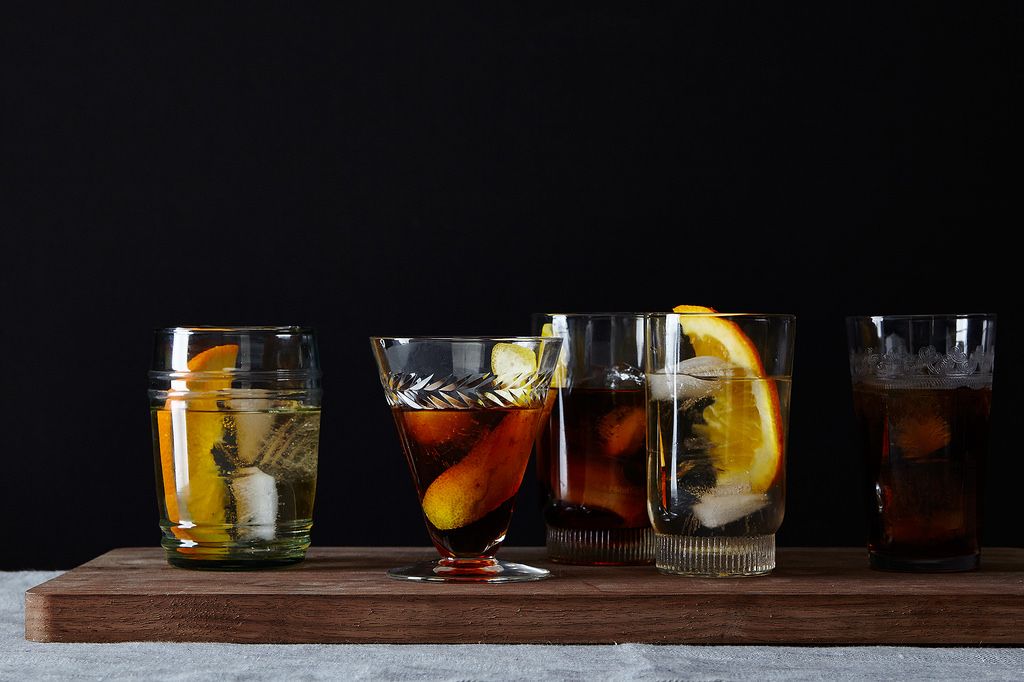
Now, as a gin and whiskey maker, I’m really no expert on low A.B.V. cocktails.
So I turned to the expertise of my friend and colleague Dan Oskey, who has been many times voted the best bartender in the Twin Cities and is a co-founder of Tattersall Distilling. He knows approximately a bazillion times more about these sorts of things than I probably ever will, and thankfully, he responded that he could talk low-A.B.V. cocktails for hours. Here are some of his best suggestions for crafting low-A.B.V. cocktails:
Spritzes:
-
Be happy all you Campari and soda drinkers: You are already low A.B.V. mixologists! Dan explained that the most basic low-A.B.V. cocktail is "a simple Campari and soda—a drink with big flavor but one that won't put you in the bag."
-
"The idea behind these drinks is that you can achieve huge flavors without all the alcohol. There are already so many nuances in vermouth alone, but mix some vermouth (let's say Cocchi Torino) with some Aperol and soda and top with aromatic bitters and you have something very special.”
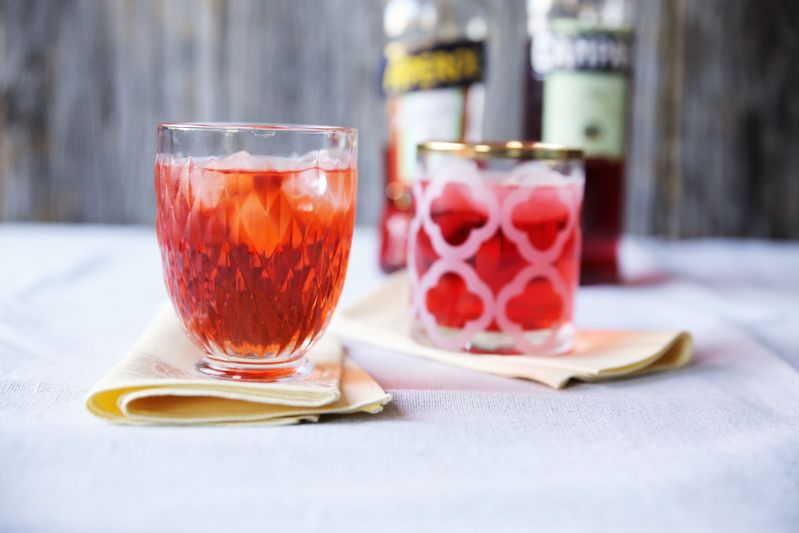
Aperol tonic (left) and Campari soda (right)
-
All sorts of simple spritzes—from the beloved Aperol Spritz, to Cocchi Americano with a splash of soda and a twist of orange, to Aperol or Campari and tonic, to the Americano (vermouth, Campari, and soda)—are all easily accessible low-A.B.V. cocktails. They make use of the complexity that already exists in ingredients like vermouth, aperitifs, and bitter liqueurs like amari, and then they open up those flavors with a splash of soda or sparkling wine.
- Or, combine several of these complex ingredients together and finish it with additional mixers, like bitters, tonic, ginger beer, or fruit juice. Sounds like a cocktail to me!

Americano: Campari, sweet vermouth, and soda
Champagne cocktails:
-
Simple takes on a Champagne cocktail—like the classic Champagne plus sugar and bitters; or a kir royale, which is Champagne with a spoonful of black currant liqueur; or Champagne augmented with a splash of St. Germaine—could all be considered low-A.B.V. cocktails as well.

-
With regards to the increasing number of sherry cocktails appearing on bar menus, Dan explained that “sherry offers a nuttiness and acidity that works wonders with spirits or on its own. It makes a great base [so that] the drink can showcase the sherry while still utilizing a spirit to provide extra backbone flavor (think, for example, 3 parts sherry and 1 part aquavit)."
- "Again you can build upon that drink with mixers (think tonic or ginger beer) and bitters. The garnish in these drinks—an expressed citrus peel or freshly woken [slapped] herb like rosemary—is going to bring the flavors of the cocktail together and should not be overlooked.”
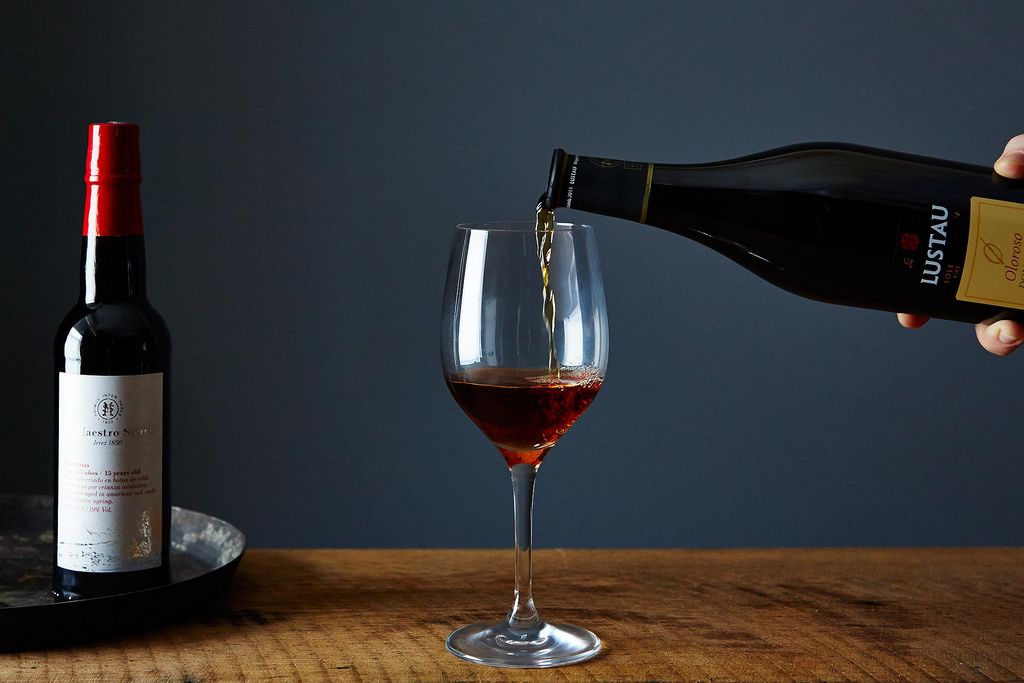
Low-proof spirit, accentuated with a high-proof one:
-
This introduces a whole slew of low-A.B.V. cocktails where a low-proof spirit makes up the meat of the cocktail, but a bit of high-proof spirit is still in there to strengthen the spine. This makes it a little boozier than the spritzy category of cocktails, but it still won’t pack the wallop of the classics that use a high-proof spirit to comprise the main body of the drink.
One thing that doesn’t work well is to try to rejigger boozy cocktails by replacing your rum or gin or whiskey with lighter ingredients and then expecting it to yield something similar to the original. It may yield something lovely, but it will be quite different.
Higher-proof spirits are drier with a rich mouthfeel, while the lower-proof ingredients are usually sweeter, brighter, and lighter. This is part of why they make such nice aperitifs and you can drink three of them without intense regret. It’s best to accept them for exactly the wonderful ingredients they are and work with them and their unique attributes to combine them to suit your taste. There’s a giant world of vermouth and other infused wines, aperitifs, amari, liqueurs, and sherry out there to explore!
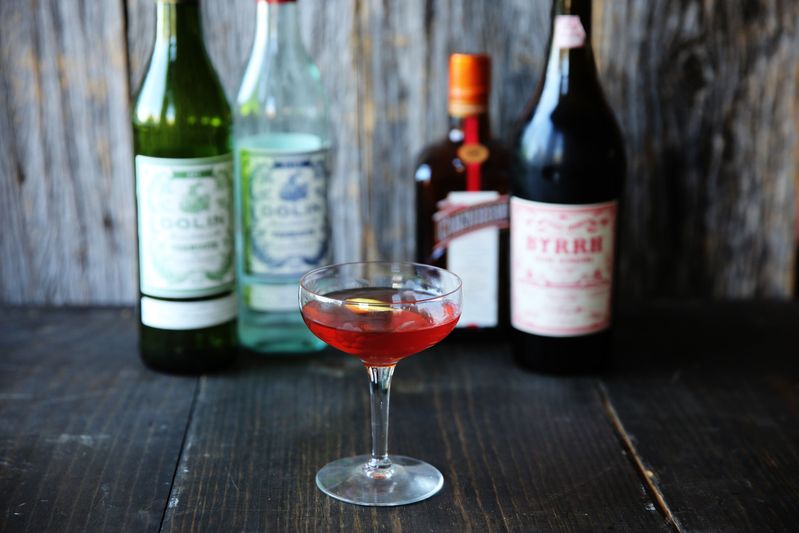
C’est Jolie
Makes 1 drink
2 ounces Dolin dry vermouth
1/4 ounce Dolin blanc vermouth
3/4 ounce Byrrh
1/4 ounce Cointreau
2 dashes orange bitter
Orange twist
See the full recipe (and save and print it) here.
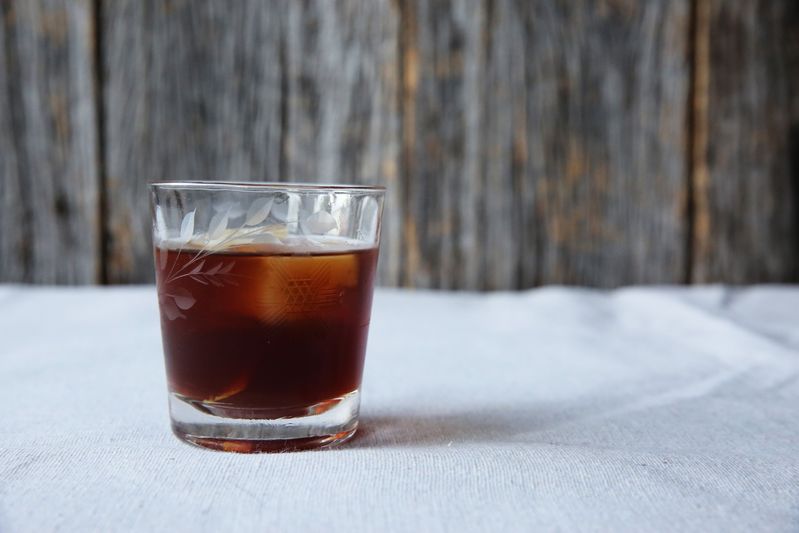
Pastoral Wander
Makes 1 drink
1 1/2 ounces Manzanilla sherry (recommended sherry is La Guita)
3/4 ounce Ramazzotti Amaro
3/4 ounce orange liqueur
Absinthe, to rinse the glass
Sage sprig, for garnish (I didn't have one, and I used an orange twist, which was good but I'm sure sage would be better!)
See the full recipe (and save and print it) here.
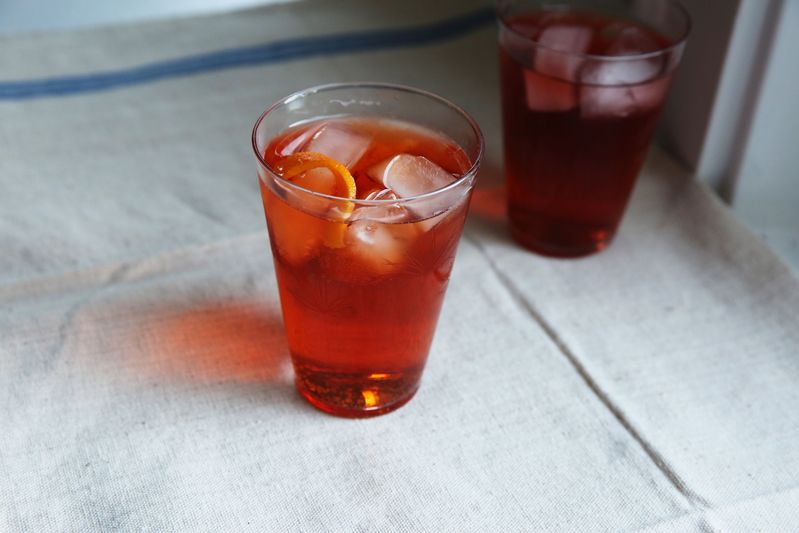
An Americano in Paris
Makes 1 drink
1 1/2 ounces Aperol
1 1/2 ounces sweet vermouth (I recommend Cocchi Vermouth di Torino)
3 dashes Angostura bitters
2 ounces soda
Orange twist or slice, for garnish
See the full recipe (and save and print it) here.
What do you make when you need a drink but aren't looking to get sloshed? Tell us in the comments (we could use your advice!).
Photos by James Ransom and Emily Vikre











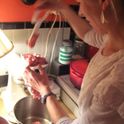
See what other Food52 readers are saying.